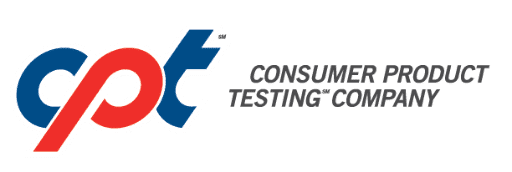There have been growing concerns over the increasing number of chemical contaminants being found in today’s drug products. A recent example was the discovery of benzene in aerosol OTC Sunscreen products, which resulted in high-profile product recalls in 2021. One might argue that chemical contaminants have always been present in drug products and that the ever-increasing sensitivity of analytical instrumentation now allows for their detection and quantitation.
This is part two of our three-part article on Drug Product Contaminants. Read part one here and part three here.
Extractables and Leachables (E&Ls)
Definition of “Extractables”
Organic and Inorganic chemical entities that are released from plastic container/closure/ delivery systems and primary container labeling systems, and into an extraction solvent under laboratory conditions.
In simple terms, “extractables” are substances which can be “pulled out” from a packaging or labeling system under laboratory conditions using “stressing conditions” such as strong solvents and elevated temperatures. (This is a “forced” process.)
Definition of “Leachables”
Foreign organic and inorganic chemical entities that are present in a packaged drug product because they have leached into that packaged drug product from plastic container/closure/ delivery systems and primary container labeling systems under normal conditions of storage and usage or during accelerated drug product stability studies.
In simple terms, “leachables” are substances which “simply migrate” from a packaging or labeling system into a product under “normal conditions” of exposure over the natural lifespan of that product or during accelerated stability testing.
Important to Note: The current United States Pharmacopeia (USP) includes General Chapter <665> entitled “Standardized Approach to Extractables Testing Plastic Components and Systems Used to Manufacture Pharmaceutical Drug Products and Biopharmaceutical Drug Substances and Products” to address extractables from contact surfaces of drug product processing equipment and components. Compliance with <665> is not required until 2026.
Sources of Extractables & Leachables
Plastic Container Components
Examples include bottles, tubes and blistering materials.
Plastic Closure System Components
Examples include caps and closures of all types.
Plastic/Polymeric Packaging System Liners
Examples include cap liners, bottle liners and tube liners.
Plastic Delivery System Components
Examples include pumps, valves, tubing and gaskets.
Primary Container Labeling Systems
Examples include printing inks, label adhesives and varnishes.
Drug Product Processing Equipment and Components (Coming in 2026)
Examples include processing equipment contact surfaces and transfer devices such as hoses and totes.
Supply Chain Chemical Contaminants
The raw materials and processing aids that are used to manufacture drug products are themselves, manufactured from bulk chemical starting materials. Since GMP does not apply to the bulk chemical industry, the ingredients that are used and the processing details employed may not be fully documented during the production of bulk chemicals; additionally, equipment cleaning may only be an occasional event.
This can result in the presence of unexpected ingredients (e.g., antioxidants, preservatives, flowing agents and cross-contaminants) and residual processing contaminants (e.g., solvents and elemental impurities) in the bulk chemicals which become starting materials for manufacturing the raw materials and processing aids used for making drug products. This is how many chemical contaminants are introduced into drug product raw materials which is why they should be screened for chemical contaminants.
Testing Schemes for Chemical Contaminants
*API Impurities
API Manufacturers typically provide an impurity profile to their clients that is specific to that API’s synthetic process and degradative pathway(s). They also provide analytical methods for determination of the profiled impurities which may be present in the API. Such API methods provide an excellent starting point for developing methods for determining the level of impurities in drug product formulations containing that API. Additionally, APIs should be screened for residual solvents and elemental impurities.
*Extractables & Leachables – Plastic Packaging and Drug Product Processing Systems
The United States Pharmacopeia (USP) provides specifications and methods for conducting E&L testing of plastic container/closure/delivery systems and proposed testing scenarios for plastic/polymeric contact surfaces of drug product processing equipment and components. USP references for E&L testing include the following:
- USP <1663> “Assessment of Extractables Associated with Pharmaceutical Packaging/Delivery Systems”. (This is a general information chapter which provides testing scenario suggestions for extractables.)
- USP <1664> “Assessment of Leachables Associated with Pharmaceutical Packaging/Delivery Systems”. (This is a general information chapter which provides testing scenario suggestions for leachables.)
- USP <661> “Plastic Packaging Systems and Their Materials of Construction”. (This chapter provides testing requirements, methods of analysis and specifications for plastic materials and components used to package therapeutic products. This chapter will eventually be replaced by <661.1> and <661.2> in 2025.)
- USP <661.1> “Plastic Materials of Construction”. (This chapter provides testing requirements, methods of analysis and specifications for plastic materials from which packaging components that are used for therapeutic products are constructed. Compliance with this chapter is currently “optional” until 2025 when it will be required.)
- USP <661.2> “Plastic Packaging Systems for Pharmaceutical Use”. (This chapter provides testing requirements, methods of analysis and specifications for plastic packaging components used for packaging therapeutic products. Compliance with this chapter is currently “optional” until 2025 at which time it will be required.)
- USP <665> “Plastic Components and Systems Used to Manufacture Pharmaceutical Drug Products and Biopharmaceutical Drug Substances and Products”. (This is a new and currently “optional” chapter having no requirements for compliance until 2026. As the title suggests, it addresses E&Ls obtained from plastic/polymeric sources during drug product and API manufacturing.)
The testing procedures identified in the USP for plastic packaging materials/systems may also be adapted for primary container labeling material E&Ls which may be present in printing inks, varnishes and adhesives.
Let CPT Assist with Your Assessment of Drug Product Chemical Contaminants
CPT’s Analytical Chemistry Lab is equipped with state-of-the-art instrumentation and staffed by a team of seasoned chemists having a wealth of experience testing for low-level chemical contaminants. Why not give us a call today so that we can begin to assist you in the testing of your raw materials and packaged drug products for expected, suspected and even unexpected contaminants?


